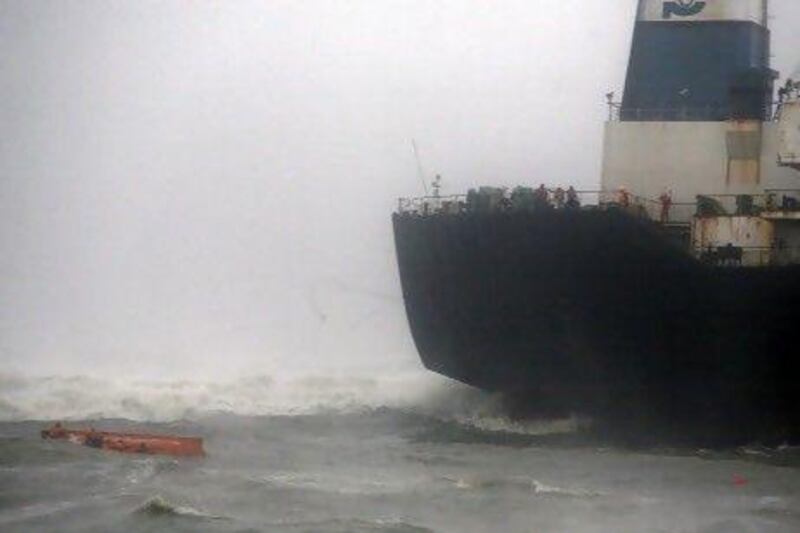NEW DELHI // More than 100,000 people fled their homes yesterday as Cyclone Nilam crashed into the coast of south-east India.
The cyclone gathered force over the southern Bay of Bengal and killed two people in Sri Lanka before hitting Mahabalipuram, 50 kilometres south of Chennai, with heavy floods and winds of 100 kph.
A 46-year-old man drowned after he fell into the sea while watching the storm with friends on the pier at Pondicherry.
A seaman drowned and six are missing after an oil tanker with 37 crew ran aground off the Chennai coast and their lifeboat capsized in high seas. The coastguard rescued 15 from the tanker and 15 of the 22 on the lifeboat.
A storm surge of up to 1.5 metres was expected to deluge low-lying areas as the cyclone crossed the states of Tamil Nadu and Andhra Pradesh overnight.
"It could bring heavy rains of up to 25cm in the next 24 hours," a meteorological spokesman said.
About 150,000 people were moved to shelters in Nellore district in Andhra Pradesh state. In Tamil Nadu, 4,000 people from Mahabalipuram, a 7th-century port and Unesco heritage site, were moved to higher ground and accommodated in 19 relief centres. The state's chief minister, Jayalalitha, ordered that essential commodities, especially drinking water, be made available.
State authorities converted 282 schools in Chennai into makeshift relief centres. The city's port halted cargo operations and 23 ships were moved to safer areas.
Fierce winds uprooted trees and blocked roads in Chennai. Police sought to reduce the chaos by providing Facebook updates on roads that remained clear.
Public transport ground to a halt, with only a few buses in service.
The Mass Rapid Transport System, the elevated railway line, was shut down amid fears that strong winds could damage overhead cables.
The storm is expected to damage crops such as rice, groundnut and maize in coastal districts of Tamil Nadu and rice and groundnut in coastal Andhra Pradesh. Farmers were already reporting damaged crops from the Cauvery region in Tamil Nadu.
Managers at the Kalpakkam nuclear plant 70km from Chennai said the necessary precautions had been taken to prevent damage, including clearing trees that could fall on the roads.
At the Bharatiya Nabhikiya Vidyut Nigam nuclear plant, they were confident they could avoid storm damage.
"We do not expect any flooding of our facilities due to the cyclone," said Prabhat Kumar, the plant's chairman and managing director. "The high tide will not affect us as the plant is located at a higher elevation."
The nuclear plant is able to withstand wind of speeds up to 160kph, he said.
K Thiyagarajan, 37, a doctor with a private airline, struggled to reach home because of high winds and slow moving traffic last night in Chennai.
"There was less traffic on the road but everyone was moving cautiously," he said. "Then I got home and there was no electricity, but that is to be expected. We were warned."
In Sri Lanka, a woman was killed on Tuesday after a tree branch fell on her, and the other victim died in severe flooding. More than 4,500 people on the island were forced out of their homes, 56 of them in the central region because of the threat of landslides, and about 1,000 houses were damaged by flooding.
The last cyclone in India struck in the same south-east region in January, claiming 42 lives and leaving a trail of destruction across Tamil Nadu.
[ sbhattacharya@thenational.ae ]
* With additional reporting by Agence France-Presse, the Associated Press and IANS
Follow
The National
on
[ @TheNationalUAE ]
& Surya Bhattacharya on
[ @SuryatapaB ]





